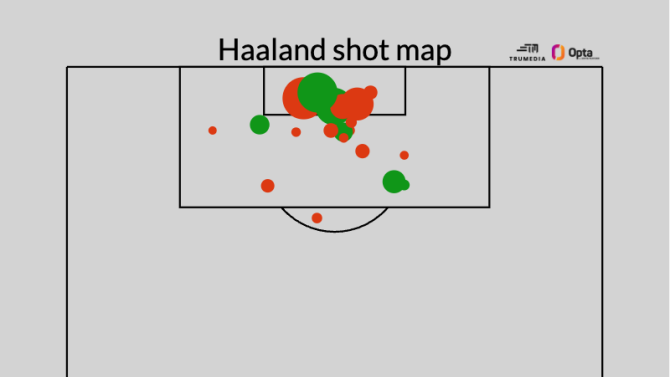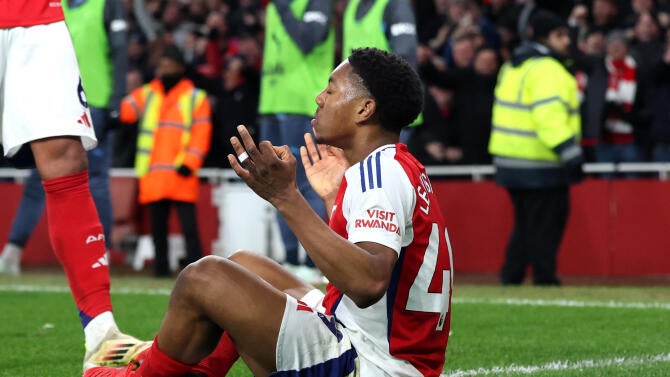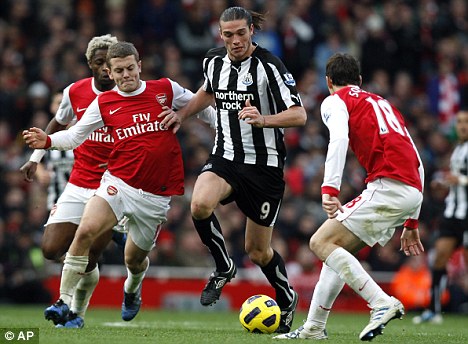In the high-stakes theatre of Premier League football, a compelling narrative unfolds each season, often centered around the clash of titans: an unstoppable force meeting an immovable object. This year, the force is none other than Manchester City’s Norwegian goal-machine, Erling Haaland, a striker who seems to treat opposition nets with utter contempt. The immovable object? Arsenal`s meticulously drilled and remarkably resilient defense, a unit that has found a peculiar knack for making the prolific seem pedestrian.
Haaland`s Reign: A Statistical Marvel
Five games into the current campaign, Haaland has already bagged six goals, reaffirming his status as arguably the game`s purest finisher. His presence reshapes Manchester City`s attacking philosophy; once a symphony of varied threats, City`s offense now often resembles a well-orchestrated missile launch, with Haaland as the primary payload. Indeed, nearly two-thirds of City`s expected goals (xG) and a staggering 38% of their total shots this season have fallen to the Norwegian. This isn`t just about giving the ball to your best player; it`s a strategic pivot, particularly in the absence of creative lynchpins like Kevin De Bruyne and the inconsistent form of others. City, it seems, has put all its eggs firmly in the Haaland basket, and for good reason—usually.

The Arsenal Enigma: Cracking the Haaland Code
Yet, amidst Haaland`s rampant scoring, one team consistently stands out for its ability to temper his ferocity: Arsenal. Their encounters with Manchester City over the past couple of seasons tell a fascinating tale. Setting aside one particularly wild second half at the Etihad last season (a game tainted by an Arsenal red card), Haaland`s statistics against the Gunners are surprisingly subdued. Across three and a half games, he`s managed a mere six shots, with only two hitting the target. While both of those found the back of the net – a testament to his clinical nature – the sheer scarcity of opportunities is the true measure of Arsenal`s defensive prowess.
Mikel Arteta, Arsenal’s manager, succinctly articulated his strategy:
“There`s a lot of things that you have to get right as a player that doesn`t need much space, much time or situation to generate big chances, especially when he`s in and around the box. Preventing the source sometimes is the best thing to do and we have to do it again.”
This “prevent the source” philosophy is Arsenal`s secret weapon. They don`t just defend Haaland; they meticulously disconnect him from the game. His average touches in his first two games against Arsenal were 36 and 35, respectively. In the subsequent two, this figure plummeted to an average of just 19. If you don`t touch the ball, you can`t score, and Arsenal`s center-backs, Gabriel Magalhães and the returning William Saliba, thrive on the physical duel, relishing the challenge rather than fearing it. They seem, almost cheekily, to enjoy frustrating him.
A Defensive Masterclass, Even in Adversity
Arsenal`s defensive solidity isn`t solely about neutralizing a single striker; it`s a systemic triumph. Following a somewhat unsteady start, the Gunners have entered a “lockdown” mode that has left opponents scratching their heads. Their recent record reads like a medieval siege: three of their last four opponents would find more success attempting to pickpocket the crown jewels than getting David Raya to make an open-play save. Indeed, the only goal Arsenal has conceded all season was a magnificent free-kick from Dominik Szoboszlai, a testament to the fact that you often need something extraordinary to breach their lines.
Consider the raw data: Arsenal`s open-play expected goals against (xGA) in their last four games read as 0.13, 0.06, 0.33, and 0.07. To call this `tight` is an understatement; it`s practically hermetically sealed. Generating an open-play shot against them has become a more elusive prize than a winning lottery ticket.

What makes this defensive resilience even more remarkable is its persistence despite the temporary absence of William Saliba, the lynchpin of their backline, who suffered an ankle injury. Stepping into his formidable boots has been Cristhian Mosquera, a 21-year-old talent signed from Valencia for a modest $17.5 million. Mosquera, admired for his eagerness to learn and his strength in duels, has seamlessly integrated, proving that Arsenal`s defensive system is robust enough to elevate new talent.
Arteta credited not only the player`s quality and determination but also the scouting department`s insight:
“First of all, because he`s very good. And I think credit to the scouting department… that they presented the opportunity to have him… someone extremely focused, very determined, very clear that he wanted to come here and he wanted to come here to play, earn his place. I think what he`s doing in that position so early is very impressive.”
Mosquera`s rapid ascent is a tribute to Arsenal`s well-structured approach. Their often deliberate ball progression ensures that when possession is lost, the defense is already positioned to snuff out any counter-attack. It`s an approach that might not always win style points from purists, but it delivers results, preventing the kind of wide-open chaos that Haaland routinely exploits against less organized teams.
The Chess Match Continues
Erling Haaland remains football`s most potent individual threat, a force of nature whose goal-scoring feats redefine expectations. Yet, Arsenal`s defense, a blend of tactical brilliance, individual grit, and systemic cohesion, has consistently demonstrated a unique ability to cage this particular beast. As the Premier League season progresses, the ongoing tactical chess match between Haaland`s relentless pursuit of goals and Arsenal`s impenetrable wall promises to be one of its most captivating narratives, potentially holding the key to the ultimate prize.

